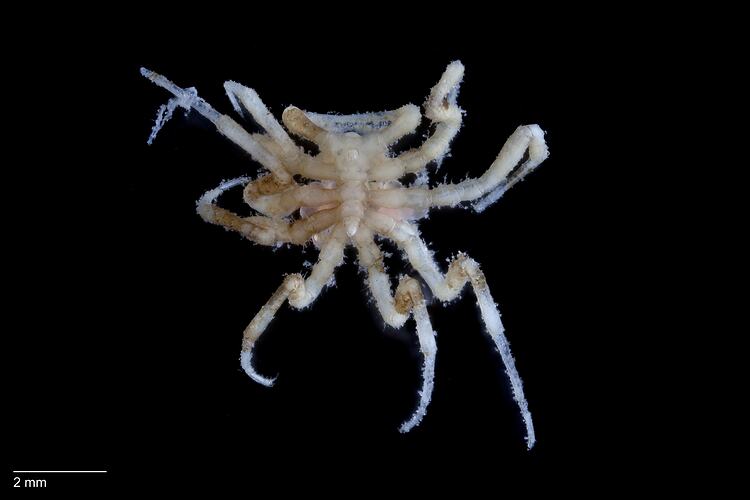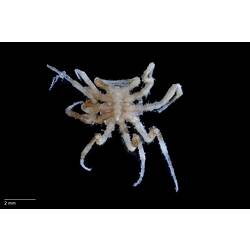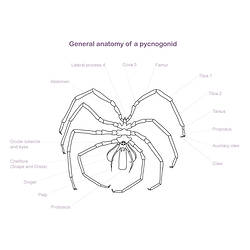General Description
Body with proboscis projecting outward from front, with the mouth at the tip. Central body (trunk) behind the proboscis, with a raised, rounded area (tubercle) bearing four eyes. Eight segmented walking legs attached to the sides of the trunk. Short abdomen behind trunk, unsegmented. Leg span about 1 cm
Biology
This species appears to be adopted to holding prey between its toothed chelae. They have been collected in low numbers of 1-2 individuals. Males carry the eggs, holding them between body parts called ovigers that hang under the animal.
Distribution
South-eastern Australia.
Habitat
Usually in sediments rich in invertebrates such as polychaetes, to depth of 329 m.
More Information
-
Animal Type
-
Maximum Size
1 cm
-
Habitats
-
Endemicity
-
Commercial
No
-
Conservation Statuses
DSE Advisory List: Not listed, EPBC Act 1999: Not listed, IUCN Red List: Not listed
-
Depths
Shallow (1-30 m), Deep ( > 30 m)
-
Water Column Locations
On or near seafloor
-
Taxon Name
-
Scientific Author
Clark, 1963
-
Common Name
Pycnogonid
-
Other Names
Sea spider
-
Phylum
-
Subphylum
-
Class
-
Order
-
Family
-
Genus
-
Species Name
novaehollandiae



